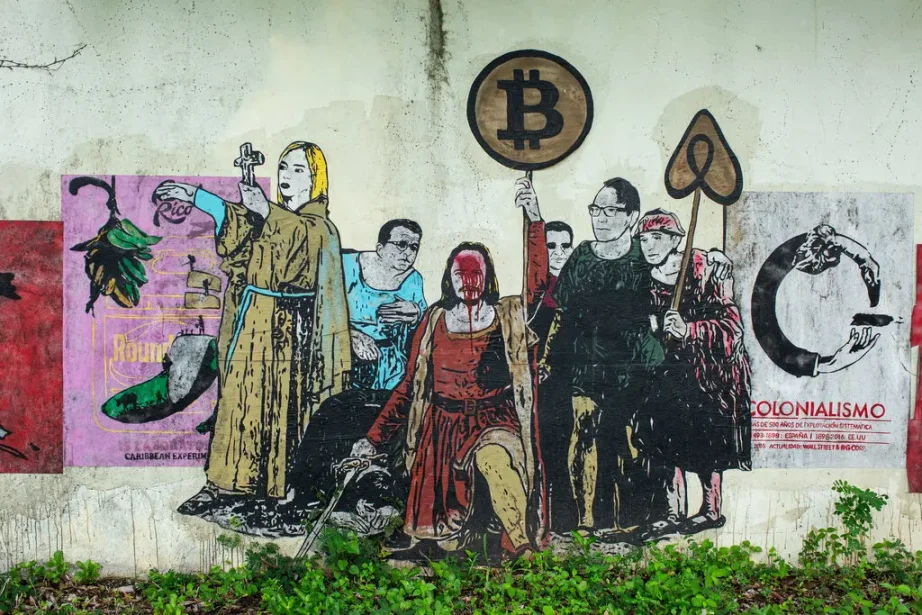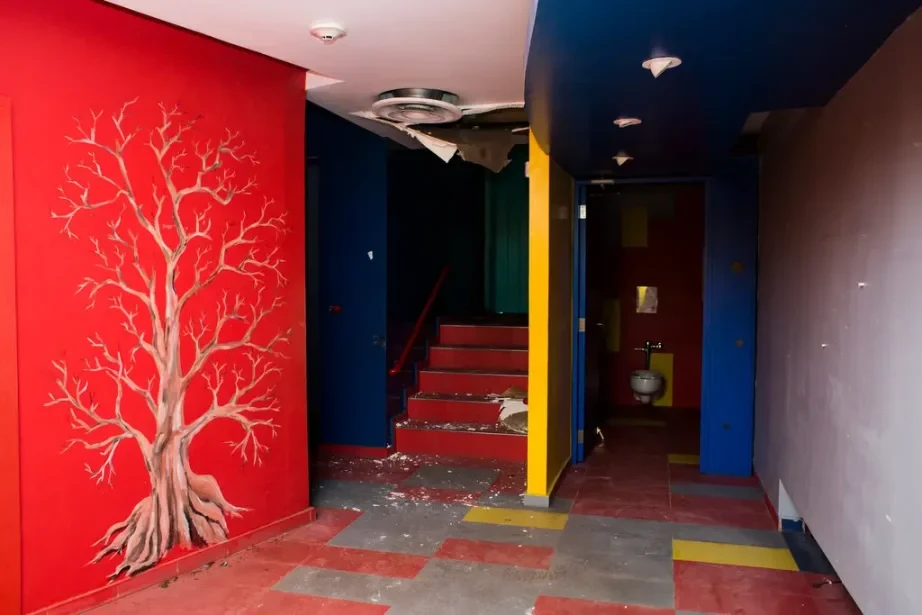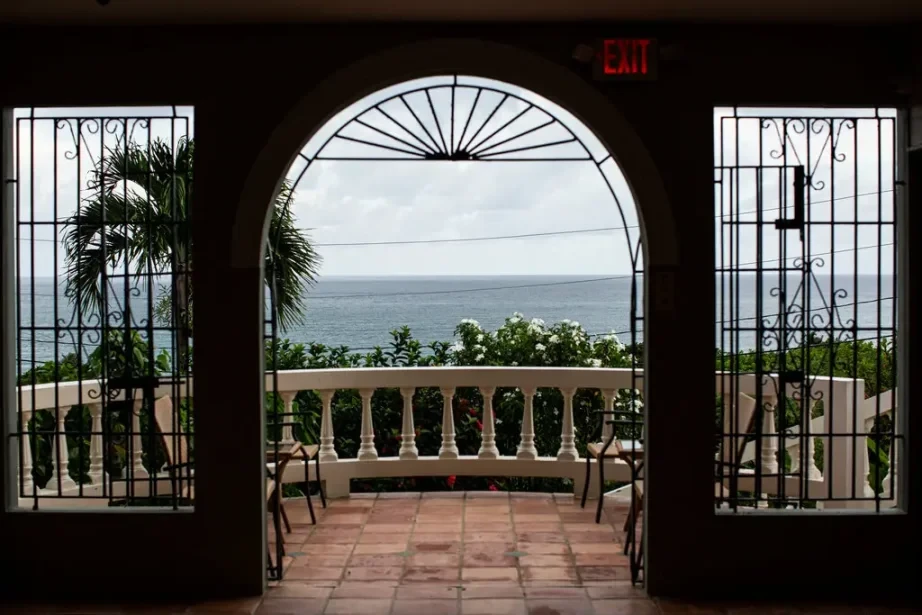The New York Times: Соучредитель Tether и его разбитая криптомеда
Original author: David Yaffe-Bellany, Laura N. Pérez Sánchez
Оригинальный перевод: Луффи, Foresight News
On a sunny day in 2022, cryptocurrency entrepreneur Brock Pierce enjoyed taking friends on a boat trip to Vieques Island, about 75 miles from his home in Puerto Rico. Pierce wanted to show off one of his “favorite places in my life.” property: a once-glamorous beachfront resort that he bought for more than $15 million.
In its heyday, the resort was a W Hotel with a 6,000-square-foot spa, a restaurant run by a Michelin-starred chef and sweeping ocean views, and it was a mainstay of Vieques’ tourism industry. The hotel was hit by Hurricane Maria and was forced to close. Pierce reopened it and used his cryptocurrency fortune to revitalize the hotel and the local economy.
Brock Pierce moved to Puerto Rico in 2017
A former child actor, Pierce has mastered acting. On trips to Vieques, he anchors his Italian-made yacht at a local port and leads guests along a beach populated by wild horses to the shuttered W The main entrance of the hotel.
“This is a big personal bet for me,” Pierce said. “It’s where my heart is.”
But Pierces extravagant display was an illusion. Like many of the other grandiose projects he launched in Puerto Rico, the hotel is now mired in debt and legal disputes. Last fall, Pierce lost the hotel in a dispute with another investor. Today, the hotel remains closed, its windows smashed, its floors covered in mold and horse manure. A $17,000 recliner designed by a famous Spanish architect sits in the empty atrium. The place is full of dust.
Pierces dream of reopening the W Vieques didnt come true
Chairs of various colors are stacked in the cool lobby of the W Hotel
When Pierce moved to Puerto Rico in 2017, he invested in a series of experimental cryptocurrency businesses. With the help of a think tank, he made a surprising promise to revitalize the local economy. Pierce is known for his role in creating one of the worlds most popular digital currencies. He led a wave of industry immigrants to Puerto Rico, many of whom began buying land and hyping a project they called Puertopia, wanting to turn the U.S. territory into a hub for cryptocurrency investors and technology startups. center.
“If you’re an American and you’re in the cryptocurrency industry, you’ve got to go to Puerto Rico at least once,” Pierce said in 2019.
Puerto Rico is a cryptocurrency paradise. In 2012, the local government passed legislation to turn the archipelago into a tax haven for wealthy immigrants. Under the law, now known as Act 60, people who move there can apply for a benefit that exempts them from paying taxes. The measure is aimed at boosting investment in Puerto Rico’s economy, which has been struggling to recover from a two-decade financial crisis.
But according to hundreds of pages of court records and interviews with more than two dozen people familiar with his efforts in Puerto Rico, Pierce’s vision of a cryptocurrency-driven economic recovery has yet to materialize. His business partners betrayed him, and some colleagues say he’s running out of money. There is no clear evidence that Pierces arrival has helped the local economy. Instead, Bill 60 has become a symbol of a new era of exploitation.
Many locals see Pierce as the latest example of how the global elite have been treating Puerto Rico as their private playground for centuries. After the U.S. invasion in the late 19th century, American businessmen seized hundreds of acres of local land to build sugar plantations and funnel the profits to the island. Back to the U.S. Decades later, the U.S. Navy conducted military exercises on Vieques, including bomb tests that damaged the ecosystem and caused long-term health problems.
As Pierce and other wealthy immigrants arrived, Puerto Rican residents saw new cracks, with soaring housing prices, especially in coastal towns, forcing local families out of their homes. On a wall outside the W Hotel, a group of local artists painted a mural In the painting, Pierce is wearing a crimson tunic and holding a Bitcoin logo symbol, with the caption: Colonialism.
Chameleon Instinct
On a recent Friday evening, Pierce, 43, sat down for coffee at the Convent Hotel in Old San Juan, a former Masonic lodge turned hotel that serves as an informal base for clandestine Puerto Rican immigrants. Wearing a wide-brimmed orange hat and an oversized white T-shirt with the words Scars Never Break printed on it, he pointed with an exaggerated gesture out the window, which looked out onto a busy cobblestone avenue called Cristo Street is one of the oldest streets in the city.
“This was one of the first pieces of colonial infrastructure built by the Spanish conquistadors,” he explained. “It was the first brick road in the entire Western Hemisphere.”
Now, the landscape belongs to Pierce: He purchased the monastery in 2018 for $4.8 million.
Pierce arrived in Puerto Rico with an unusual resume: the son of a Minnesota home builder and a church official, a former child actor who had a brief role in the Mighty Ducks movie and He starred in a movie called First Child with comedian Sinbad. As an adult, he became an early investor in several well-known cryptocurrency projects, eventually making $700 million to $1 billion. wealth.
An aerial view of San Juan, Puerto Rico . Pierce is leading a group of investors to Puerto Rico who are committed to turning the U.S. territory into a hub for cryptocurrency investors and tech startups.
After the passage of Proposition 60, tourists from the United States became a common sight in restaurants and nightclubs throughout Puerto Rico. Pierce is a frequent visitor to the Burning Man festival and one of the most recognizable visitors. He is often seen walking along the St. On the streets of Old Juan: He is short and energetic, wearing a T-shirt and leather vest, with a necklace around his neck.
Pierce bought two houses in a gated community in Dorado, where wealthy people live, and he lives there with his partner, entrepreneur Crystal Rose, and his mother, Lynette Calabro, according to two people who attended the party. , Pierce mingled with local politicians and hosted lavish parties where guests sometimes took drugs such as cocaine and ketamine.
For a while, Pierce managed to charm some of the locals with his openness and curiosity. Like a skilled actor, he had a chameleon-like instinct to adjust his behavior to the audiences preferences. If its a crazy person, hell act very serious, said Hugo de la Uz, a local maritime expert who helps manage Pierces yachts. But if its a crazy person, hell act very crazy.
Pierce showed an interest in almost all world religions and had a hippie spirit. Once, while traveling with some fellow Act 60 immigrants, he nestled in the arms of a Kapok tree, a tree that some I felt a connection to him because he had a spiritual depth, said Carli Muñoz, a Puerto Rican pianist who dated Pierce in San Juan.
The Kapok Park is a tourist attraction and protected area on Vieques Island. In the center of the park is the oldest Kapok tree in Puerto Rico.
But that was as far as the goodwill went. “I had made up my mind not to do business with him anymore,” Muñoz said.
Real estate records show that Muñoz has purchased at least 14 properties since moving to Puerto Rico. Some of those properties, like the monastery, are already functioning businesses. But Muñoz has also announced plans to transform much of his portfolio into new projects. The projects have not come to fruition. A hospital he bought in Humacao late last year is in trouble, and the gallery was recently put up for sale. In 2019, Pierce took over a building in Old San Juan that he built in the 1980s. The three-story building once housed a childrens museum. For a time, he told local media he used it as a place to meet with friends and discuss ideas. Today, the building is empty, with walls covered in The paint is peeling off.
The abandoned space inside the former Childrens Museum in Old San Juan, which Pierce said he bought as a place to gather and discuss большой ideas.
“It’s so sad,” said Robert Cimino, a Puerto Rican businessman who owned the building for 19 years before selling it to Pierce for $2 million. “I wanted to sell it to someone who could maintain it.”
Time and again, Pierce found local Puerto Ricans to help him with development projects, but many of these collaborators later said they were exploited and not paid enough. Meanwhile, he was in court is locked in a dispute with another Act 60 immigrant, Joseph Lipsey III, who last year seized control of the W Hotel, claiming Pierce defaulted on a loan.
Pierce denies defrauding anyone. But at least three lawsuits are pending against him in local courts. Over coffee at the monastery, he admitted that his poor judgment and naivety had derailed his plans in Puerto Rico. “I trusted people,” he said. “That’s one of the things that got me into trouble,” he said.
Booing at a beauty pageant
Pierce likes to portray himself as a geopolitical promoter. In 2020, he ran for president of the United States as an independent candidate and received nearly 50,000 votes. He boasted that he had dates in El Salvador and Panama. One night in June , his aide announced that Pierce would participate in a Zoom call with the president of Palau, a small archipelago in the western Pacific Ocean.
“I’ve spent a lot of time with leaders of nearly every religious faith in the world,” Pierce said at the monastery, “as well as leaders of many of the world’s nation states.”
But Pierces main focus is Puerto Rico, where he has become a leading voice on Proposition 60. After moving out, he told Rolling Stone that he would rebuild with the money we saved from the IRS in a Robin Hood way. The publicity has helped make Puerto Rico a popular destination for cryptocurrency enthusiasts: about 2,600 people currently benefit from tax breaks under Act 60, according to government data.
When Pierce arrived, locals showed strong opposition. Someone wrote in red paint on the wall of the Childrens Museum: Foreigners go home. But behind the scenes, Vieques was expanding his real estate empire. He hired He hired Gonzalo Gracia, a well-known local hotel developer, to help him find buildings in Puerto Rico that could be restored and transformed into tourist attractions.
Pierce helped organize the 2021 Miss World pageant in San Juan. When he was introduced as one of the judges, the audience booed.
Soon, Pierces business progress began to deteriorate, and he frequently got into legal disputes with local partners. In 2021, he helped organize the Miss World pageant at a concert venue in San Juan. By then, Pierce was already considered a speculator in Puerto Rico. Politico: The crowd booed him when he was introduced as one of the judges. He later sued Puerto Rican beauty pageant executive and former Miss World Stephanie del Valle, claiming she owed him $1.2 million. Ms Del Valle refuted the allegations. His own lawsuit, accusing Pierce of defamation and seeking $31 million in damages, is pending in local court. (The dispute is pending in local court. Pierce says he is “committed to a fair resolution of this matter.”)
Del Valle was one of the first Puerto Ricans to clash with Pierce, accusing him of deceiving and manipulating them. During the pageant, Pierce bought an 80 percent stake in the W Hotels. The deal was one of his largest investments in Puerto Rico. One, and paved the way for him to seek more than $30 million in tax credits from local governments.
Gracia assisted in the acquisition. He met with local officials in Vieques on Pierces behalf and found an architect to plan the hotels reopening, court records show.
But the partnership was short-lived: Gracia claimed in a 2022 lawsuit that once the deal was finalized, Pierce cut him out of the project and refused to pay him his $790,000 commission.
A similar situation played out at another project on Vieques. In 2021, Pierce asked a local naval engineer to help him open a hotel and museum on a ship docked off the island’s northern coast. The engineer requested anonymity to avoid being identified. He arranged meetings with local administrators and discussed the project with the mayor, but Pierce abruptly abandoned the plan. In an interview, he said Pierce still owed him $17,000 for the work. Said he had no such debt.)
Last year, there were signs that Pierce was stretched thin. He asked De la Uz to fix up the Aurora, the yacht he used to ferry friends to and from the West Coast. Most of the guests, De la Uz recalled, were “people he had tried to convince to give him.” He is an American who has money,” and “he portrays himself as the savior of Puerto Rico.”
In a 2023 lawsuit, De la Uz claimed that he and Pierce, who co-owned the yacht, had defaulted on repairs. De la Uz said the yacht was taking on water and slowly sinking as guests partied on the deck. Into the Caribbean Sea.
Pierce declined to comment on the allegations, saying: We are actively working these matters through the courts to reach a fair resolution.
“I didn’t do any due diligence”
When Pierce goes out on the Aurora, he sometimes brings a newcomer to the Act 60 community: Lipsey, a 62-year-old logistics tycoon. For a while, Pierce only knew Lipsey by his nickname, Jopepi. Pierce thought he was socially awkward, but he was very interested. This is a very kind person, I believe, Pierce said.
Pierce knew only the general circumstances of Lipsey’s arrival in Puerto Rico. In 2017, Lipsey made a fortune from relief work after Hurricane Maria through contracts with the U.S. government. But two years later, a legal scandal exposed his Living in high society in Aspen, Colo. A wild New Years party at Lipseys home led to a police investigation, and he and his wife eventually pleaded guilty to serving alcohol to a minor and were sentenced to a years probation.
The Lipseys sold their house in Aspen and eventually moved to Puerto Rico, settling near Pierce. Soon, the two families became close. Lipseys wife became friends with Pierces mother. Pierce recalled that After Ms. Calabro died of a heart attack in 2022, Lipsey said he had made her a promise: He would always be there for her family.
Pierce and Lipsey have worked together on various business projects, but the most significant deal involved the W Hotel. Last October, Lipsey agreed to lend Pierce $10 million, including $4 million to buy the remaining 20% of the hotel and $6 million to buy the remaining 20% of the hotel. The terms were risky for Pierce: He had to close the hotel deal within two weeks. As collateral, he had to put up his entire stake in W Hotels. Pierce said he was I felt uncomfortable with the request but agreed to it. “I didn’t do any due diligence,” he recalls.
A month after the agreement was signed, Lipsey accused Pierce of violating the agreement and seizing control of the hotel. Lipsey later claimed in legal documents that Pierce did not use the borrowed funds as planned, but instead spent the money on a private jet. , and hosted a 72-hour birthday party across San Juan, Miami, and Los Angeles.
As the dispute escalated, Pierce asked Lipsey to meet at the Hacienda Tamarindo, a small hotel in Vieques that Pierce had purchased for $3.2 million. Lipsey later told Puerto Rican police that the meeting amounted to kidnapping. Pierce then locked up Lipseys room and demanded her help. his cell phone, then locked the door, with an armed guard patrolling nearby.
In 2021, Pierce purchased the boutique hotel Hacienda Tamarindo for $3.2 million
In court, Pierce denied misappropriating the borrowed money or kidnapping Lipsey. But one of his advisers, Cassandra Wesselman, who recently moved to Puerto Rico, said he was not in a good frame of mind when the W Hotel dispute began. Ms. Wesselman said it was She suggested bringing the armed guards to the Tamarindo estate to protect Pierce from a couple living in another room who, she explained, were part of a cult.
A month after the contentious meeting, Pierce sued Lipsey in an attempt to regain control of W Hotels, accusing him of fraud and theft.
The judge denied Pierces request for an injunction that would have restored his ownership of the W Hotel while the case proceeded. Pierce and Lipsey have remained in touch to discuss a possible settlement. But their friendship is over.
Lipsey did not speak publicly about the dispute until July, when he discussed it for two hours via WhatsApp with a New York Times reporter. With a cigarette dangling from his lips, Lipsey virtually toured his Tennessee home. Inside the house, where he lives part of the year, he turns on his camera to show off his unusual art collection. On one wall hangs a canvas with two spots of red paint. It’s his son’s daughter’s, Lipsey explains. Friends work.
Lipsey called Pierce not a good person and a bad businessman. Everything he did with moving to Puerto Rico and everything he promised, he didnt do.
He said the same thing to Pierces face. In one heated exchange, Lipsey said, he called Pierce a real disappointment to your mom.
Carefree confidence
On a June morning, Pierce strolled through Old San Juan, pointing out his favorite spots as he meandered along narrow sidewalks. Despite the heat, he was dressed in black. Every day, there’s no need to worry about time-consuming outfit choices. “People like Mark Zuckerberg and Steve Jobs wore the same thing every day,” Pierce explains.
He stopped outside Carlys, an upscale jazz bar owned by the Puerto Rican pianist Muñoz. Pierce said Muñoz had written a song just for him and Ms. Rose. He smiled at the thought. The song is called ‘Superhero,’ ” Pierce said. (The song’s actual title is “Super Power.”)
Even through all the setbacks, Pierce remained confident that he could be a force for progress in Puerto Rico. But his confidence masked a continuing turmoil in his business affairs. The conflict between Pierce and Lipsey was evident in his friend’s Robert Anderson, a cryptocurrency enthusiast living in Puerto Rico who is friendly with Lipsey, said they acted “like kids.”
Friends and associates of Pierce said he appeared to be running out of money. Lipsey’s lawyers argued in court that Pierce lacked the “money or resources” to develop the W Hotel. This summer, Puerto Rico’s basketball team was forced to resign, according to documents reviewed by The New York Times. A representative of the Mets de Guaynabo team emailed Pierce to complain that he had failed to pay more than $25,000 in sponsorship fees owed to the team.
Pierce is dressed in all black, with a black hat, and sits on a stool in a white room
Pierce also expressed concern for his safety in Puerto Rico. According to two people close to Pierce, he privately discussed plans to build an ammunition depot on Vieques. He said the depot could be used if locals rose up against him. A certain degree of protection will be provided.
In a 17-page statement, Pierce denied that he had proposed the arsenal and said he was still wealthy, refuting suggestions that he was financially strapped. He said the complaint by Mets de Guaynabo was a misunderstanding and that the source of the He has now agreed to pay the fee following a misunderstanding over the terms of the sponsorship.
However, just as the New York Times was finishing its story, a publicist for Pierce mistakenly sent a message to a group chat that included New York Times reporters and Ms. Wesselman, Pierce’s adviser: “We haven’t been paid yet.” I guess you dont have the money to pay us, or you would have already paid us, Wesselman said, laughing off the message, calling the PR person totally teasing us. Later, the publicist said Pierce always paid on time.
Pierce defended his work in Puerto Rico. He said he had made charitable donations, including a six-figure gift to support Covid relief efforts in the region. “Transformative projects take time,” Pierce said. While some initiatives have faced challenges, others have achieved significant success.
Among his many accomplishments, Pierce mentioned a hospital in Humacao that he purchased in late 2023 — an investment he pitched to Lipsey. He said he worked with Puerto Rican radiologist Josué Vázquez Delgado to make the hospital It emerged from bankruptcy and retained more than 90% of its employees.
But in an interview, a doctor at the hospital who wished to remain anonymous said Pierce owed him tens of thousands of dollars in wages. The doctor said the hospital had been in arrears with suppliers and that some surgeons were running out of equipment. He said his team had addressed those issues and significantly improved hospital operations.)
Last month, Pierce tried to put his success in Puerto Rico on a visual tour of San Juan. He led two New York Times reporters to a building he bought in 2019 that was sparsely furnished with an extra television screen. The building, he claims, houses the world’s first NFT art gallery. “You might not expect Puerto Rico to be the first place in the world to pioneer technology,” he says. Images from the exhibition They include a fluorescent dinosaur nestled in a forest of giant cacti, which Pierce said his 5-year-old daughter designed using artificial intelligence tools.
What he failed to mention was that a luxury real estate company had posted a notice for the building’s sale and was holding an open house. Confronted with this fact, Pierce admitted that he had recently tried to sell the gallery. He explained that it It never quite opened up, and he was always struggling to make money.
This article is sourced from the internet: The New York Times: Tether co-founder and his shattered crypto dream
Related: Nervos Network: Native Bitcoin L2 Architecture and RGB++ Asset Issuance Protocol
1. Project Background and Introduction As the largest cryptocurrency, Bitcoin continues to gain adoption and recognition. However, its success has also exposed some limitations and challenges, especially in terms of scalability. For example, after the Segwit upgrade, the Bitcoin blockchain has limited the block size to 4 MB, which limits the number of transactions that can be processed in a given time. As the network grows, this limitation leads to longer confirmation times and higher transaction fees, making Bitcoin less efficient when handling large transaction volumes. Compared to other blockchains, Bitcoins scripting language currently lacks the flexibility and expressiveness required to develop complex smart contracts in addition to value transfer. To address these limitations, a variety of Layer 2 (L2) solutions have been proposed, such as payment channels, sidechains, and…



















Хороший
Хороший